What Colors Do You Need to Make Black
This post may contain affiliate links. We may earn a small commission from purchases made through them, at no additional cost to you.
Black is considered one of the most underrated and the most often forgotten about colors. As a matter of fact, in science, black is an absence of light and not technically considered a color. Most would suggest buying a tube of black paint and skipping the hassle of trying to mix the colors. That said, a lot of the prominent painters throughout history have mixed their black paint colors. So many variations are possible when mixing your black paint hues, so let us get started on how to mix the colors that make black.
- 1 A Study of the Color Black
- 1.1 Why Is Black Not Considered to Be a Color?
- 2 Creating Your Art With Black
- 2.1 Why Mixing Your Own Black is so Important
- 3 How do you Make Black Paint?
- 3.1 Using the Primary Colors to Make Black
- 3.2 Using Printing Primaries to Make Black
- 3.3 Using Other Primary Shades to Make Black
- 4 Using a Blue Base to Make Black
- 4.1 How to Make Black Using Phthalo Blue and Cadmium Orange
- 4.2 How to Make Black Using Ultramarine Blue and Burnt Umber
- 5 Using a Green Base to Make Black
- 5.1 Using Phthalo Green and Alizarin Crimson to Make Black
- 5.2 Using Phthalo Green and Quinacridone Red to Make Black
- 5.3 Using Dioxazine Purple and Phthalo Green to Make Black
- 6 Learning About Temperature Adjustment
- 6.1 How To Make Black in a Warmer Temperature
- 6.2 How To Make Black in a Cooler Temperature
- 7 Frequently Asked Questions
- 7.1 What Two Colors Make Black?
- 7.2 How to Make Black Paint?
A Study of the Color Black
Before explaining exactly how to mix black in our tutorial, we have to give a thorough understanding of what black is, how we see it, what it stands for, and why it makes more sense to mix your shades of it. We should have a great understanding of black and what colors make black. How do you make black? What 2 colors make black?
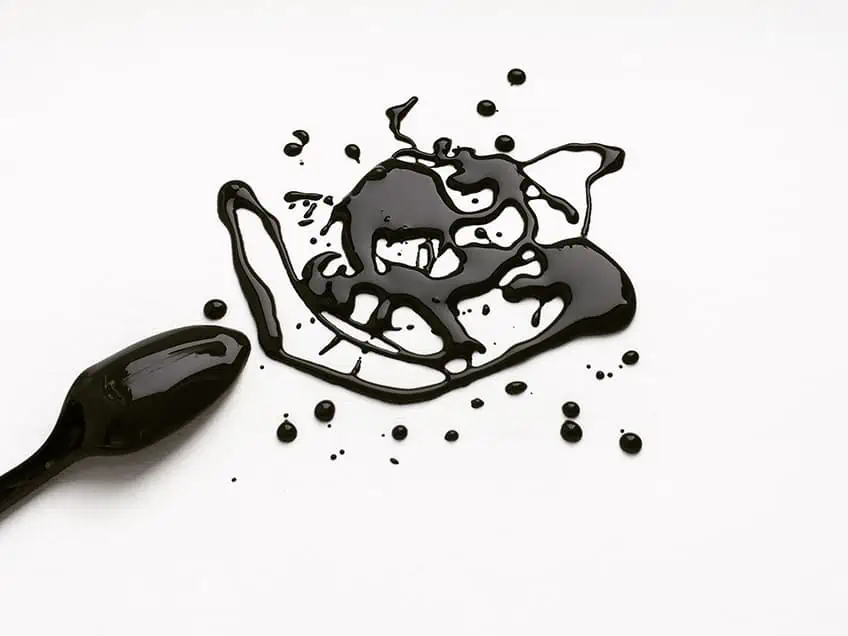
Why Is Black Not Considered to Be a Color?
As we stated above, black is not technically considered a color, unlike all of the colors in the rainbow. Each color that we can perceive with our eyes is a wavelength frequency of light, a scientific look at how color is made up. Though objects don't have color themselves, they reflect light in a frequency that lets us perceive color from them. For instance, a small, blue flower absorbs most of the light frequencies but reflects the wavelength for blue back at our eyes, so we perceive it as blue.
The reason that black is different is that it is not a wavelength but a total lack of light. A black surface absorbs all frequencies of light, so does not reflect any color at us that we can perceive with our eyes. It starts to get confusing when we try to make black by mixing colors of paint, the thought process is a strange one.
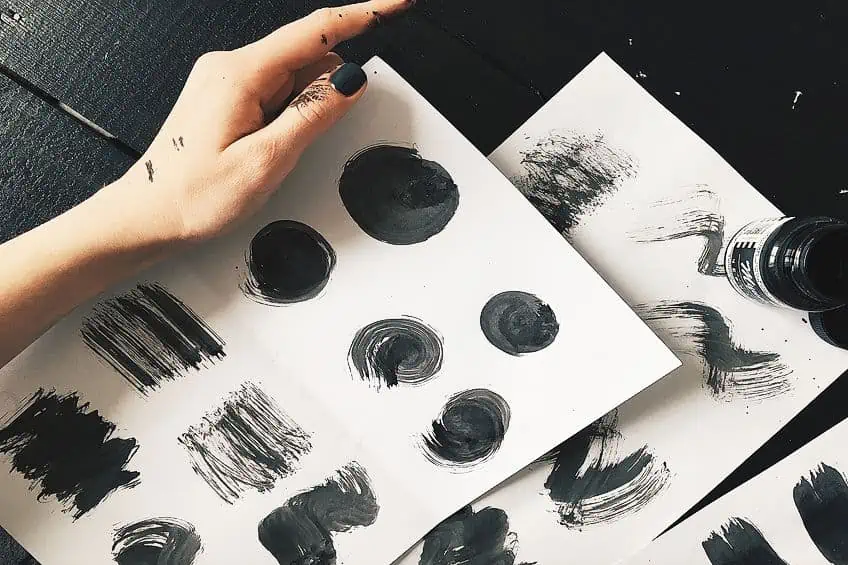
Creating Your Art With Black
Though not strictly speaking a color, black is a very important part of illustrating and painting. It is used in a variety of ways, from background to outline, adding perceived dimension, shadows, and creating a mood for a piece. Like most other colors, there are plenty of emotions and meanings that black can bring to your art, from mourning to intricate feelings of mystery. The supernatural and extraterrestrial connections that black imparts are excellent for adding an uncomfortable and mystical mood to a piece. What colors make black?
There are a lot of various details that we'll discuss that surround the colors that make black, though the cooler and darker the hue of black being used, the more mysterious a design can be. Black is often connected to the unknown, like massive dark, night skies or bottomless pits of dark despair. This has led to black being known as part of death and evil, often having shady characters lurking in dark spaces.

When people mourn those that have passed on, black is worn. Widows have long been attired in black for long periods after their partner's death. The actual figure of death, with his long scythe and hooded cloak, is always shown in black. The demonization of black, as opposed to the purity of white, allows it to be used for the negative sides of all bad situations, from bad morals to racism, or characterizations like the "black sheep" in a family whose considered worse than all of the others.
Though black is so often considered negative, it is also very often used to add class and make someone look more sophisticated. A "little black dress" at a cocktail party is often perceived as extremely elegant and a sexy way to dress, with "black tie" events using Tuxedoes to add formality and sophistication. It is also considered a slimming color, making the wearer look thinner, and so being extremely popular in fashion design. Interior designers also use black to play with perspective.
Why Mixing Your Own Black is so Important
Though a lot of black shades can be similar, just as with any color, different tones and shades of black can be mixed for different effects. How do you make black? That is why we feel it is so important for artists to be able to mix their very own shades of black. Some artists may feel that creating one's versions of black is too difficult and that buying it is so much simpler, but we feel very staunchly that varying ones work with our mixed black shades is a great way to add more life and exclusivity into our works of art.
To be truthful, it is extremely unlikely that you would be able to mix true black by ourselves, though that does not go to say that we can't get close to the darkest shades that we need. Black that has been created by your hand will often be way more vivid and lively. Using your mixes of black will often help to bring your mind's vision to life with better depth and greater precision. What colors make black?

By mixing your colors that make black, you can create much lighter versions of black or go extremely dark. You could also make your shades of black cooler or even warmer by adjusting the composite colors that you've used. It's exciting for us to share the various ways to mix your black hues, so let's get into it.
How do you Make Black Paint?
There are three main methods that we can use to answer the question of how to make up the color of black. Several tricks can be used to adjust the shade of black that you're making to get the best shade for your work. The first method we will show you is to mix all three of the primary colors, the second method is to use blue as the base color and the last of the three methods uses green.

How to make black paint? Use your sketchbook to record these methods if you have never mixed black paint before because you will want to create black again in the future. You can draw a square of each component color and another for each black shade, to show each method of what colors make black.
Using the Primary Colors to Make Black
This is the first method we'll be discussing, using the primary shades of color to create black. All one needs for this particular method is the three primary shades, namely red, blue and yellow. Though it is a simple method, you will need equal amounts of each of these color shades to create a nice thick shade of black. Any paint type medium can be used to do this method, from watercolor to acrylics and oils.
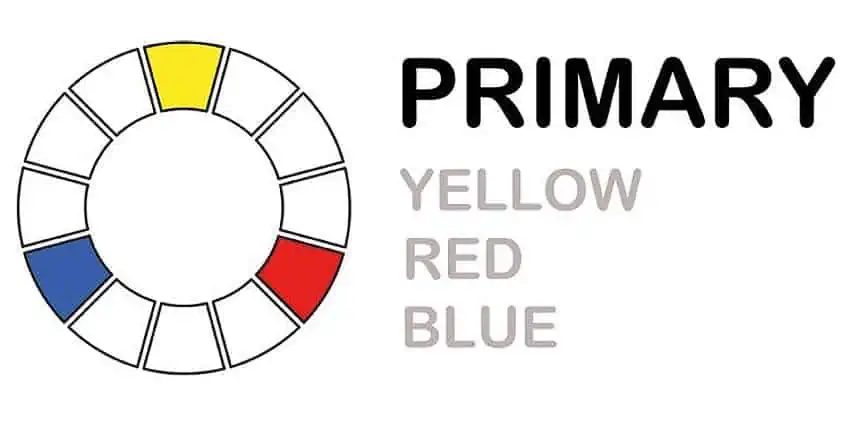
You can easily create different shades of black by adjusting the different shades of primary colors that you mix. Lighter shades of primary colors will create a lighter version of black that starts to get a brown tinge. You can also start to adjust the equal parts ratio to alter your shade of black. By using more blue, it will make a cooler shade of black, while more red will warm it up.
Using Printing Primaries to Make Black
These are the primary colors used by printers. They are very proficient for making an almost pure black when mixed in the right proportions. The exact three colors are:
- Hansa yellow
- Phthalo blue
- Quinacridone magenta
The first is a very bright and also warm Hansa Yellow. Exceptionally bright, phthalo blue is on the much cooler side of our light frequency and color temperature. A more muted and almost maroon style of red, quinacridone magenta is quite muted, but still has a vivid character.
Then, how do you make black with three shades like these? The best method we have found is to start by mixing the blue paint with the magenta to create a vivid and warm shade of purple. You can then start to add yellow and because purple and yellow are complementary colors on opposite sides of the color wheel, the yellow will start to cancel out the purple and leave us with a very dark black shade. This is the closest shade of black that an artist can get by mixing their shade of black themselves.

Using Other Primary Shades to Make Black
If you would like to make a more brown shade of black, use these hues of primary shades:
- Yellow ochre
- Alizarin crimson
- Ultramarine blue
Compared to the primary printing colors, these are less vivid and less bright. Yellow ochre is a bit darker than Hansa yellow, leaning more towards brown. Ultramarine blue is a bit darker than phthalo blue, leaning more towards purple, meaning it is a bit warmer. Alizarin crimson is a wonderful deep burgundy hue, also leaning more towards purple, meaning that it is a cooler shade of red.

Start, similarly to the last method, by mixing the red and blue shades to create purple. This shade of purple will be fairly dark. Then you can mix the yellow ochre into the purple to start to cancel out the purple and create black. Because of the hints of brown in this black due to the more brown-yellow shade, it is great for shadows and creating dimensions on objects in a painting.
Using a Blue Base to Make Black
Though you could spend a lot of time in life creating black from the primary colors, variety is considered the spice of life. For cool black colors, blue, as a primary shade, makes one of the best base colors to create a cool and deep black hue. Depending on the exact hue of blue used, the shade of black will change, as well as with the various colors you add into your black mix.
We are going to show you here how to use two different methods for how to make black paint using a blue base. We encourage experimentation, so it would be a great idea to learn the methods and then experiment to see how many different shades you can make.
How to Make Black Using Phthalo Blue and Cadmium Orange
To create a lighter shade of black, that reminds you of an almost dark grey hue, this method is tops. Using these two colors you can make a light black without adding white. This color has a magical quality because these two colors are complementary.
They are both very vivid and lively, so they neutralize each other almost completely. The bright phthalo blue cancels out the bright cadmium orange and the same for the reverse. This shade of black becomes a slightly brown, light black neutral color. It is the perfect hue to create shadows or dimensions, in spaces that don't need a very dark shade of black.

How to Make Black Using Ultramarine Blue and Burnt Umber
When a darker and cooler hue of black is needed, these two colors can create a great mix. For instance, this black hue could be used for a darker night sky or a deep ocean scene. Both of these component colors could also be used a lot in mixing colors to cool down and make other colors darker.
In the perfect mix, you would use equal parts of each color to neutralize and cancel each other out exactly, creating a very rich shade of black. It is a great idea to experiment with the mixing ratio of ultramarine blue and burnt umber to get different shades of black. Adding more blue color will make your mix of black cooler, adding more umber will leave your black more brown.
Using a Green Base to Make Black
You could have seen that when you add white to a bought black paint from an art supply store, the result is grey with a bit of a green tinge. Most of the commercial black paints have a base green pigment which is the reason for this green tint.
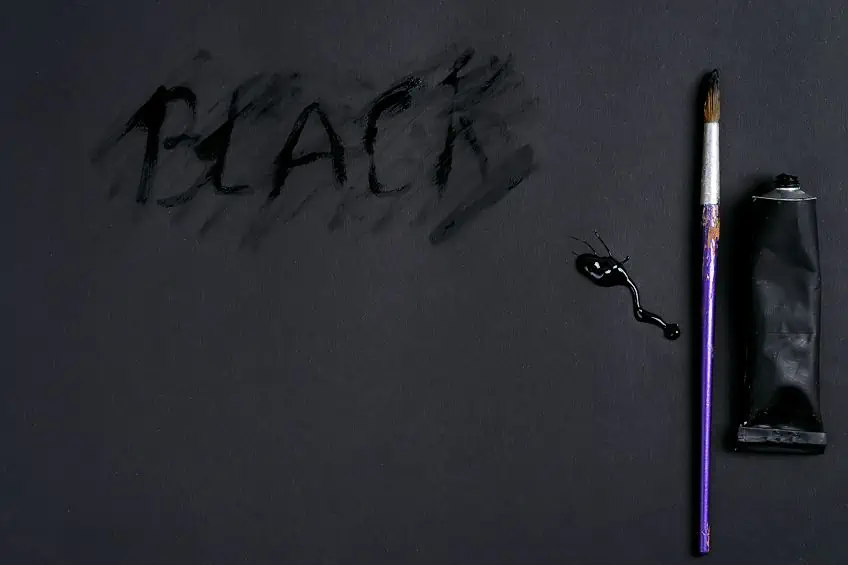
Using a very dark green is the best way to create a dark and beautiful dark black hue. We are using phthalo green in all of our methods, as it is a very dark green that also cool and rich. We will mix this green with purple and two other types of red to make up our various black shades.
Using Phthalo Green and Alizarin Crimson to Make Black
In the previous method of making black with primary colors, we made black with alizarin crimson. Essentially, this method is similar to the primary color mix, but we are combining yellow and blue into one color. Red and green are complementary, much the same as blue and orange.
The darkness of alizarin crimson and phthalo green is the most critical part of using this set to make black. Mix equal amounts of each color and try out your shade of black on a white piece of paper. This bright and lovely shade of black has a slight hint of brown, though it is almost entirely masked by darkness.
Using Phthalo Green and Quinacridone Red to Make Black
This is another similar method as before as we also used this red in one of the primary color mixes. This shade of black is called transparent black because the two colors used are called transparent colors. Due to this transparency, you wouldn't be able to create a neutral grey from this black by lightening it. It takes a bit of practice to get this black hue perfect but the effort is worth it. The shade of this transparent black is very close to the store-bought black paint and has a cool temperature.
Using Dioxazine Purple and Phthalo Green to Make Black
This is a slightly different combination than the usual, purple and green are not both primary shades so are different from the last two mixes. The darkness of the dioxazine purple and the phthalo green is what gives this shade of black its special magic. Combine equal parts of the shades and test your hue of black on paper. This shade of green is very strong, so could overpower the purple color and you could have to add more of it to get a better balance. A dark, velvet and beautifully rich shade of black will be created by these two colors.
Learning About Temperature Adjustment
A large variety of black shades have been shown in these three methods we have used. Some of the hues of black we have created are cooler and some of them are warmer, all because of the component colors. We can adjust the temperature of our black shades after we have mixed them if we would like warmer or cooler tones.
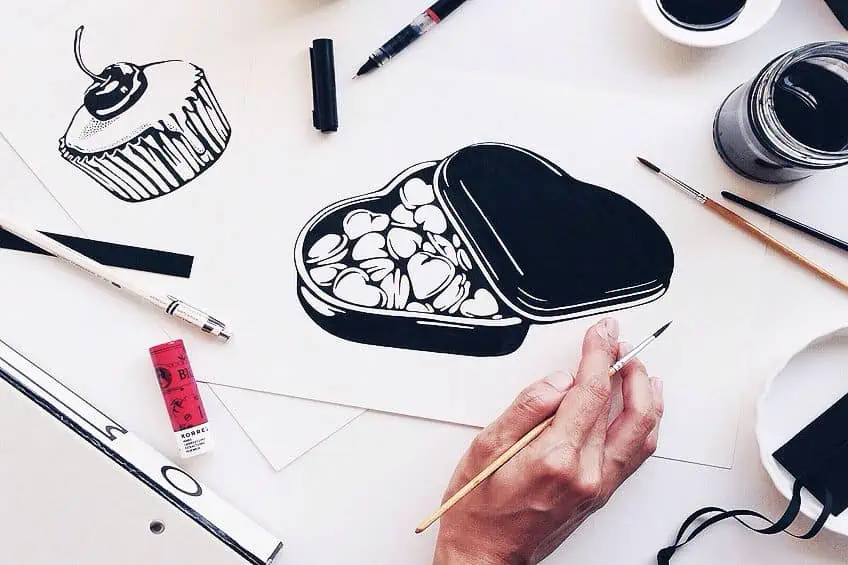
How To Make Black in a Warmer Temperature
Numerous colors can be mixed with black shades to make them a bit warmer. A word of warning, always use the smallest bit of color to add at a time, as they can easily overpower the component shades, and then you won't have black anymore. Here are a few of the best shades to add warmth to your black shades.
- Cadmium orange
- Alizarin crimson
- Quinacridone red
How To Make Black in a Cooler Temperature
Adding a small amount of cooler shades makes it very easy to make your black shades cooler. Also, remember to add little bits at a time so as not to change your base tones too much. The best colors that can be used to make your shades of black paint cooler are:
- Dioxazine purple
- Ultramarine blue
- Phthalo green
- Phthalo blue
We have come to the end of our tutorial on how to make black, hopefully, you will feel way more empowered to experiment and create your unique shades of black and use them in your artwork. Black has just as many varieties as any other color, so the world of possibilities becomes infinite and full of ways to add yourself to your work. Putting more of yourself into a piece adds more life to it and enhances your creativity.
Frequently Asked Questions
What Two Colors Make Black?
Black can be made from a variety of colors and in a few different ways. In the instance of what two colors make black, you can use a dark green hue such as phthalo green, mixed with a red hue, such as alizarin crimson. A mix of a blue color, such as ultramarine blue, can also be used, with a shade of orange such as cadmium orange.
How to Make Black Paint?
Lose your need to buy black paint in a tube from a shop. It is very straightforward to create your shades of black paint by mixing different colors in the methods we have shown. A combination of the primary shades and using green or blue as a base.
What Colors Do You Need to Make Black
Source: https://acrylgiessen.com/en/what-colors-make-black/